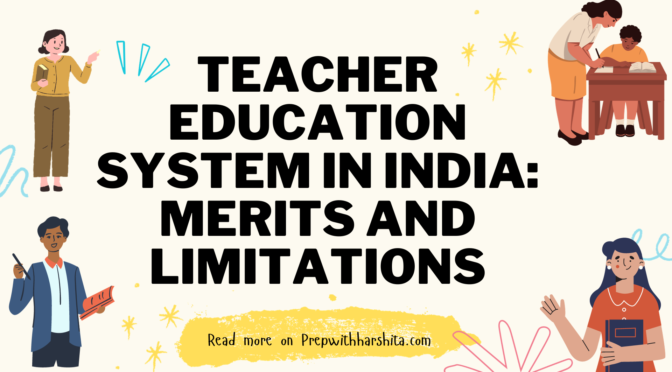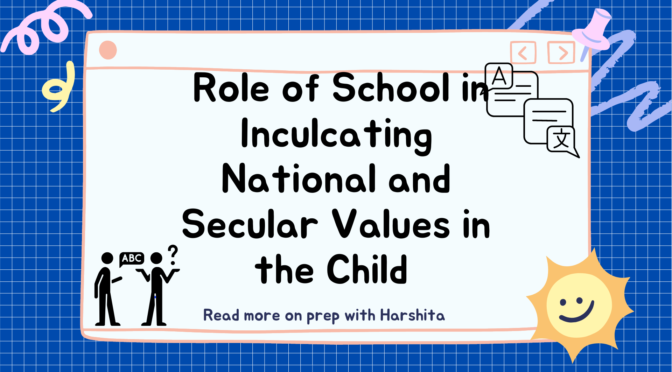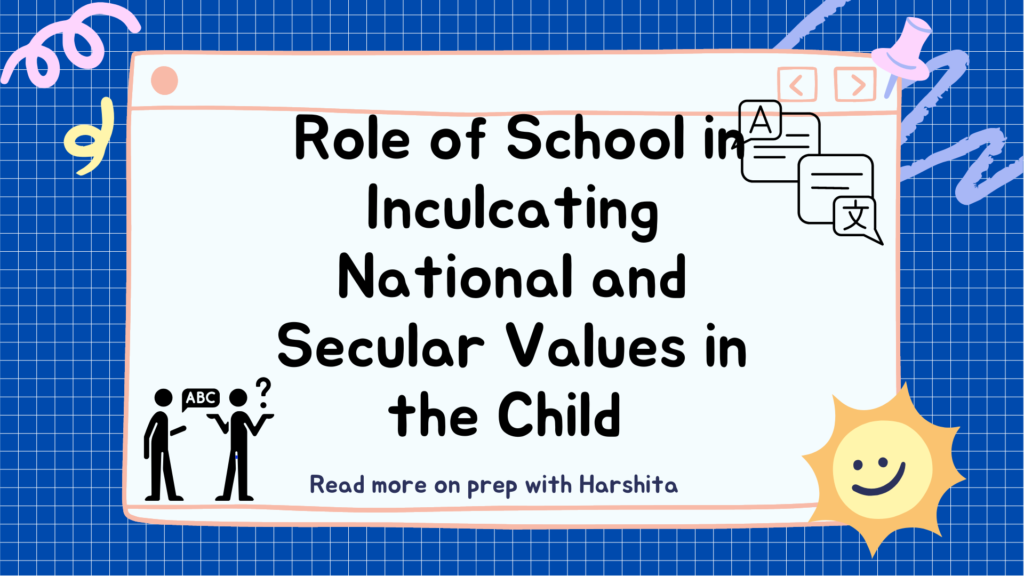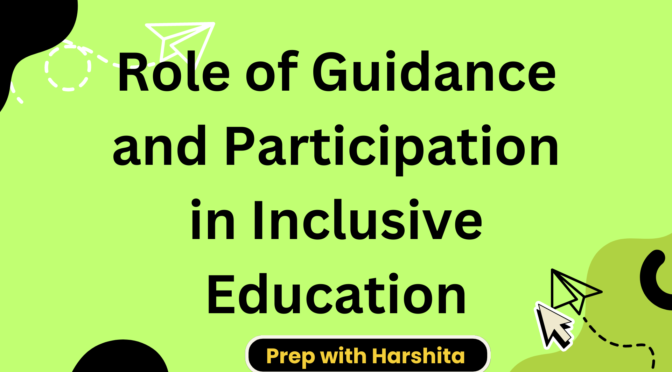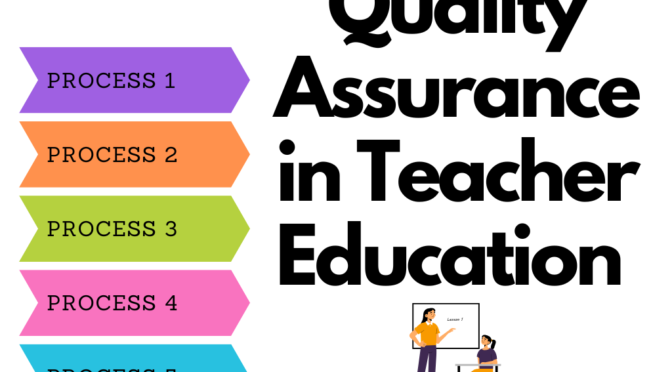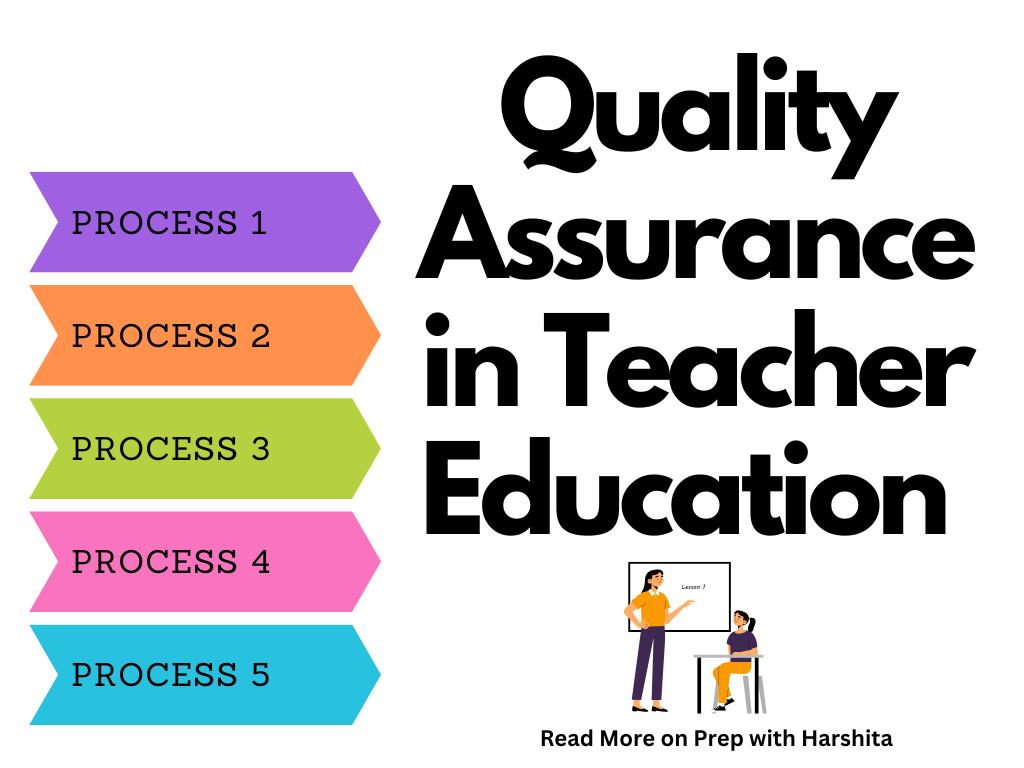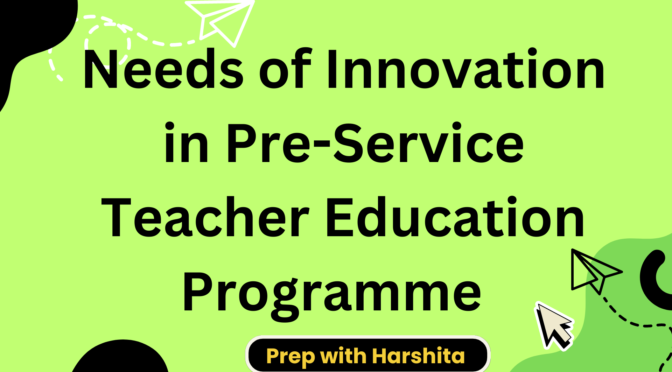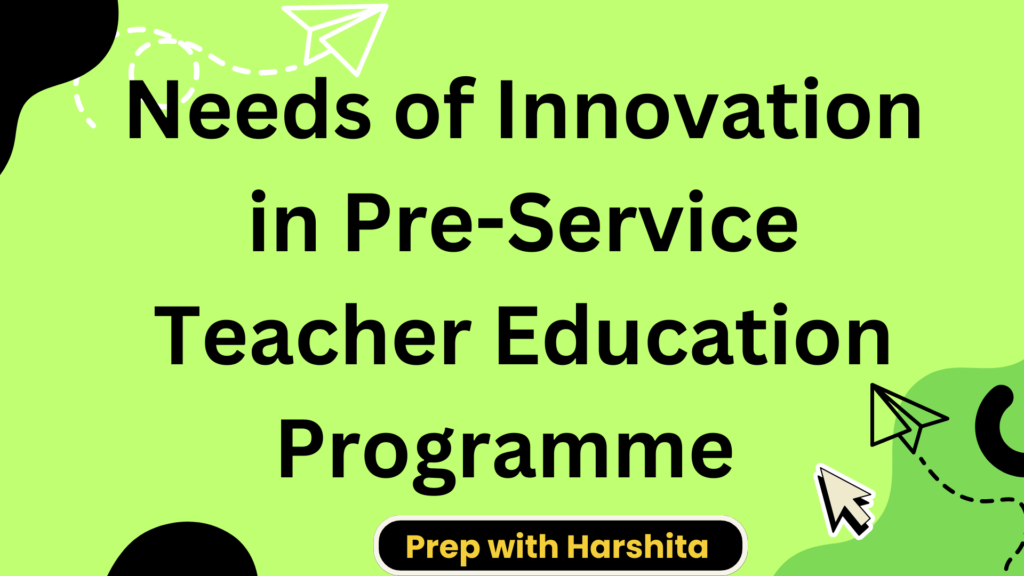The structure of the teacher education system in India has evolved over the years and is primarily governed by the National Council for Teacher Education (NCTE). The teacher education system in India is designed to prepare educators for various levels of the education system, including primary, secondary, and higher education.
Here is an overview of the structure, merits, and limitations of the teacher education system in India:
Structure of Teacher Education System in India:
- Pre-Service Teacher Education:
- Diploma in Elementary Education (D.El.Ed): This is a two-year program designed to prepare teachers for elementary-level education (classes 1-8).
- Bachelor of Education (B.Ed): A one-year program (or two years in some cases) for graduates, which prepares teachers for secondary-level education (classes 9-12).
- Bachelor of Elementary Education (B.El.Ed): A four-year integrated program that prepares teachers for elementary-level education.
- In-Service Teacher Education:
- Teacher Training Programs: Various short-term and long-term in-service training programs are conducted for practicing teachers to update their skills and knowledge.
- Online and Distance Education: Some universities offer in-service teacher education programs through distance learning and online courses.
- Higher Education for Teachers:
- Teachers can pursue postgraduate and doctoral programs in education to specialize in their respective fields and contribute to educational research and policy development.
Merits of the Teacher Education System in India:
- Standardization: The NCTE sets guidelines and standards for teacher education programs, ensuring a certain level of quality and consistency in teacher preparation.
- Diversity: The system caters to the diverse educational needs of the country, from elementary to higher education levels.
- Inclusivity: Various programs are designed to accommodate individuals from different backgrounds and with varying levels of prior education.
- Innovation: Efforts are being made to introduce innovative teaching methods and technology integration in teacher education.
- Research Opportunities: Higher education in teacher education provides opportunities for research and development in the field of education.
Limitations of the System :
- Quality Variability: There is a significant variation in the quality of teacher education institutions and programs. Some institutions lack proper infrastructure and qualified faculty.
- Curriculum Relevance: The curriculum in many teacher education programs is often criticized for being outdated and not aligned with the needs of the modern education system.
- Theoretical Focus: Many programs focus heavily on theoretical aspects of teaching and lack practical training and exposure to real classroom situations.
- Rote Learning: Traditional teaching methods are often used in teacher education, which does not encourage critical thinking and innovation.
- Lack of Continuous Professional Development: In-service training for practicing teachers is often inadequate. The opportunities for continuous professional development are limited.
- Language Barrier: Language can be a barrier for students from non-English medium backgrounds, as many teacher education programs are conducted in English.
Read more: Inquiry Learning Model
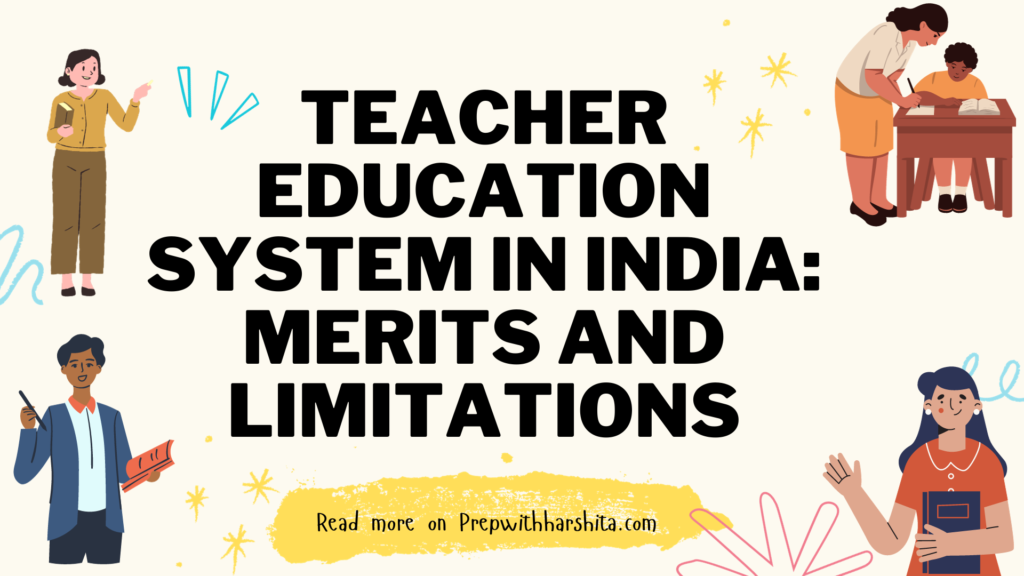
Watch videos: Prep with Harshita

